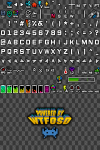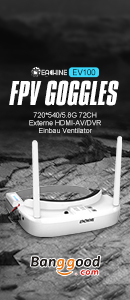Steht in der Beschreibung von Github:
INAV
Select "HDZero VTx" or "MSP Display Port" (on newer INAV versions) as the Peripheral. Next, select "HD" in the OSD tab if you'd like to use the HD Canvas.
If the iNav OSD appears garbled at first, try entering the iNav menus using the RC sticks, and then exiting the menus. This will force INAV to switch into HD mode a second time.
Due to a known issue, the INAV artificial horizon and other elements can become corrupted in packet loss situations. To work around this, assign a blank OSD screen to a switch, or assign a switch to the OSD feature. Toggling to a blank screen or turning the OSD on and then off will fix display corruption.
Nicht schön wenn der artificial horizon den Bildschirm flutet und man dann in dem Bildbereich nichts mehr sehen kann. Auf solch eine Erfahrung kann ich bei meinen Speedmodellen bei über 300km/h gerne verzichten.
Bei INAV werde ich das erst nutzen wenn dieser Bug behoben ist.
INAV
Select "HDZero VTx" or "MSP Display Port" (on newer INAV versions) as the Peripheral. Next, select "HD" in the OSD tab if you'd like to use the HD Canvas.
If the iNav OSD appears garbled at first, try entering the iNav menus using the RC sticks, and then exiting the menus. This will force INAV to switch into HD mode a second time.
Due to a known issue, the INAV artificial horizon and other elements can become corrupted in packet loss situations. To work around this, assign a blank OSD screen to a switch, or assign a switch to the OSD feature. Toggling to a blank screen or turning the OSD on and then off will fix display corruption.
Nicht schön wenn der artificial horizon den Bildschirm flutet und man dann in dem Bildbereich nichts mehr sehen kann. Auf solch eine Erfahrung kann ich bei meinen Speedmodellen bei über 300km/h gerne verzichten.
Bei INAV werde ich das erst nutzen wenn dieser Bug behoben ist.



